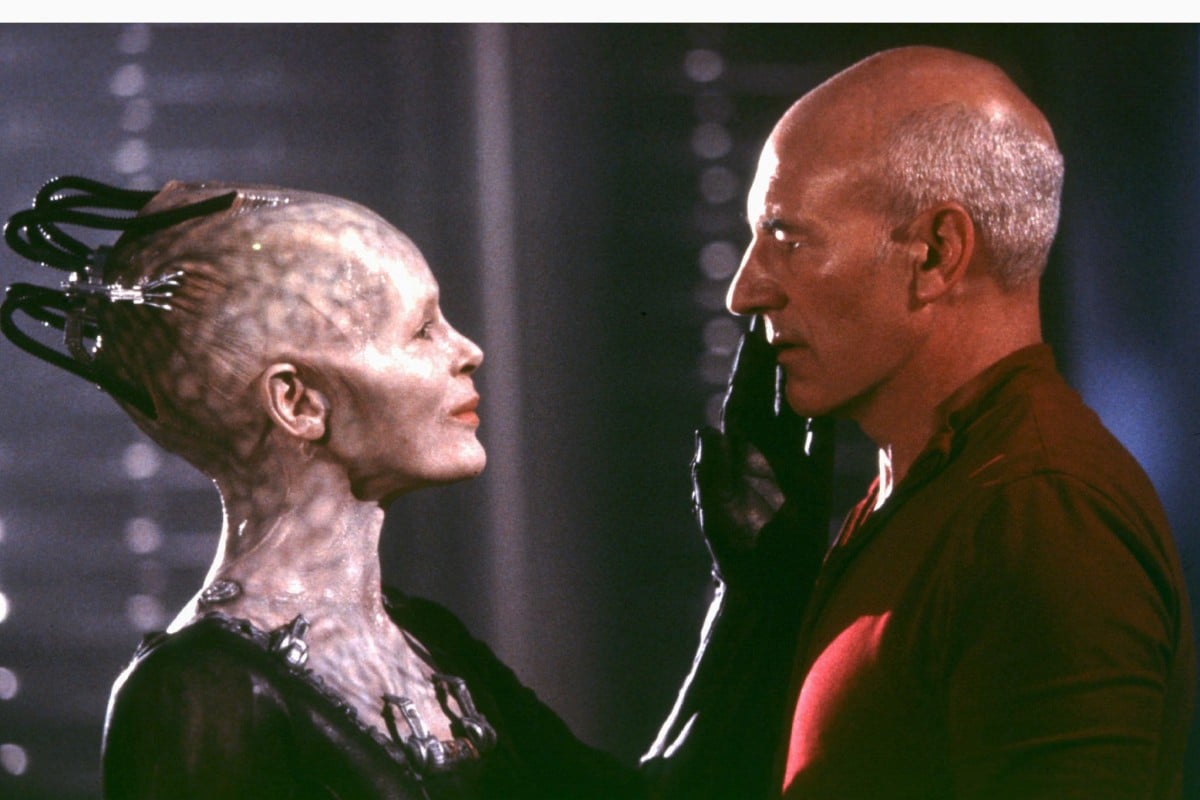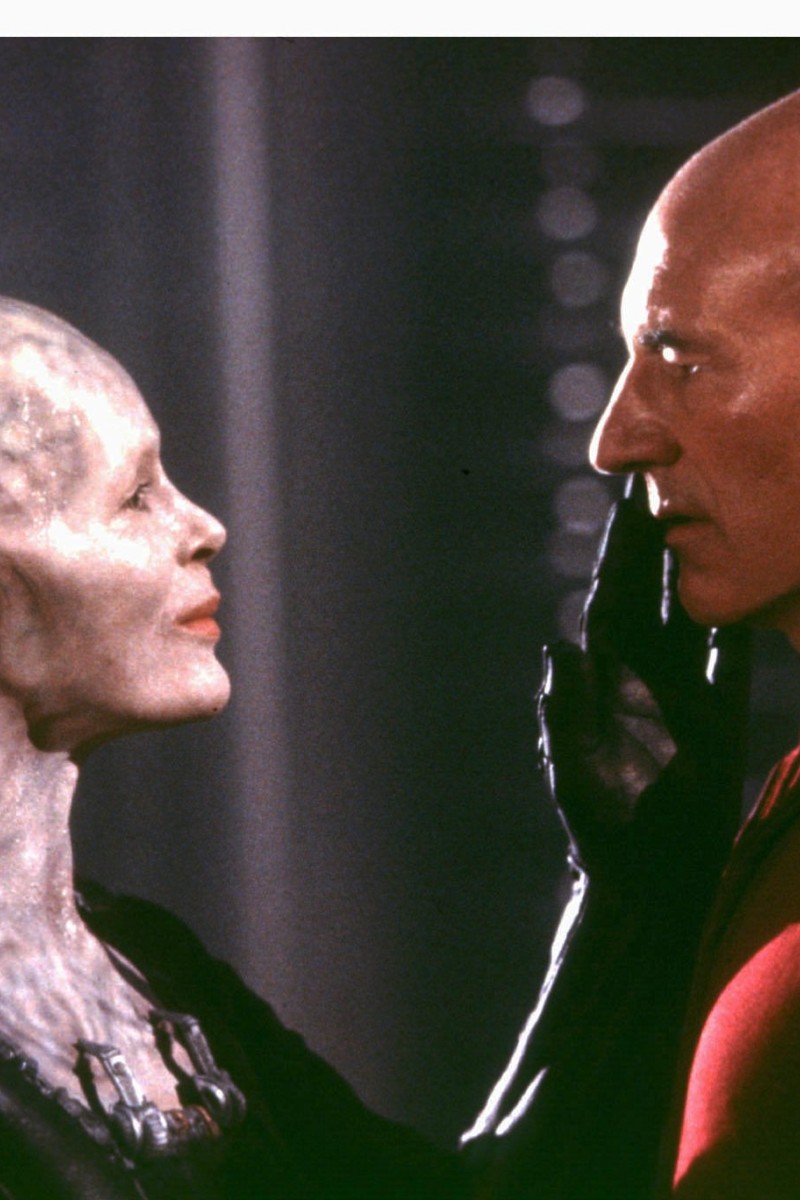 Come back to my starship for some tea.
Come back to my starship for some tea.Star Trek – the most famous science-fiction universe of all time – was absolutely awful when it came to food. Captain Jean-Luc Picard had the galaxy’s cookbook at his fingertips, and what was his favourite order? "Tea, Earl Grey, hot." No disrespect to the earl, but none of those "strange new worlds" with "new life and new civilisations" made a better drink.
Voyager, the Star Trek franchise set on a ship stranded 70,000 light-years from Earth, was also the television series set furthest in the future – in the 2370s. But nearly every year of the show’s run, the crew burned (or vaporised) a pot roast in their mission to boldly eat what everyone has eaten before. I don't know what humans or Vulcans or Klingons will be eating on starships in 350 years, but I'd bet against pot roast.
Prophets of the past often kick-started our future: Think of Leonardo da Vinci's 33-barrel machine gun, Mark Twain's "telectroscope" Internet or Aldous Huxley's "soma" antidepressants. But they simply can't do food. What our culture sees as forward-thinking today is more about returning to basics (slow, local, organic, paleo) than about harnessing new technology and hatching new ideas. Somehow, our greatest food innovators haven't been futurists. They’ve been corporations playing to our salty, sugary and fatty desires by finding new – admittedly, delicious – ways to combine existing foods.
What will pizza look like?
Ask a chef or a foodie about cuisine in 2050 or 2100, and they might delight you with weird tales of molecular gastronomy or give you dystopian warnings about Soylent, a food-replacement smoothie now in fashion in Silicon Valley. But they won't tell you what normal foods such as sandwiches and pizzas will be like in the 22nd century. Famous chef Mario Batali is too busy serving up his grandmother's recipes, and Danny Meyer is preoccupied with his Shake Shacks' homage to 1950s burger joints. Next month, the James Beard Foundation's annual awards ceremony will anoint an "outstanding restaurant" that fits, rather than breaks, the mold. It will declare what outstanding should be, not what it could be.
Much of our music, fashion and vocabulary – our very culture – would seem alien to our ancestors. So why is our food so familiar? In the same way cars were first called "horseless carriages," we bury the future in the tomb of the past. Yes, George Jetson pops a pill for dinner, but it tastes like chilli dogs or old-fashioned pork chops.
Just eat what your great-grandma ate, urges Michael Pollan, foodies’ patron saint. The more rigid we are about that, the more we limit what our future can become. We need more of the open-mindedness with which astronomers approach exoplanets. We need exogastronomy.
Exogastronomy
Sci-fi gastronomy (bite-fi?) is fat with disappointment. It makes my Trekkie heart a bit heavy to know that the marketing minions at Taco Bell have done a better job of reimagining food than the writers behind Star Trek. Sadder still is that while the different races in Star Trek’s get along so well, its kitchen is fairly racist. Somber Vulcan fare is all bland plomeek broth and meditative teas. Bellicose Klingons devour live dishes (including heart of targ, a kind of domesticated warthog) and wash them down with blood-infused alochol. Money-grubbing Ferengi eat flaked blood fleas, gree worms, slug steak, snail juice and spore pie. Ferengi Slug-o-Cola (jingle: “Drink Slug-o-Cola! The slimiest cola in the galaxy!”) has 43 per cent live algae in every bottle.
In Back to the Future Part II, set in 2015, Marty McFly’s family eats Pizza Hut pizza that expands massively when run through a hydrator. But what does it look like? Does it have stuffed crust? Is it wrapped in bacon? Are there wild toppings? No. It just looks like the pizza you’d have eaten in 1989, when the movie came out.
In Ray Bradbury’s story The Fox and the Forest, fugitive 22nd-century time travellers spot the man hunting them in 1938 Mexico by his conspicuous enjoyment at a cafe, the idea being that even today’s frozen dinners taste like food from the best banquets compared with the slop and swill we will swallow in the future. In 1984,George Orwell describes a bowl of stew as "a filthy liquid mess that had the appearance of vomit". From Hollywood's Soylent Green to Arthur Clarke's Amborsia Plus, there is a weird idea that innovation leads to high-tech horror. "It won't be bad at all," Isaac Asimov wrote in his 1964 predictions about 2014’s "mock-turkey" and "pseudosteak".
Not bad is not good
But not-bad is not the same as good. So Dex’s Diner, despite being on the Star Wars planet Coruscant in a galaxy far, far away, is basically a old fashioned malt shop, right down to the Brooklyn accent of its droid waitress, FLO. And here on Earth, Alain Ducasse’s Eiffel Tower restaurant, Le Jules Verne, named for the godfather of science fiction, insults its namesake by serving dishes that are among the tastiest ways to be bored (beef broth, duck foie gras and black truffle ravioli is 20,000 leagues underachieved).
Perhaps the 1993 film Demoliton Man, set in the Southern California pan-metropolis of San Angeles in 2032, comes closest to predicting the future. In that dystopia, all restaurants are Taco Bell, as it was the only chain to survive "the franchise wars." (In some overseas versions, Taco Bell was replaced by Pizza Hut.) It's an apt vision because today's lowbrow fast-food shops are already light-years ahead of Star Trek.
Fast food is way ahead
Little Caesars recently brought out a bacon-wrapped pizza crust. Shortly afterward, KFC – where you can eat a sandwich whose slices of bread have been replaced by slabs of fried chicken – premiered edible coffee cups. Taco Bell, home of fanciful offerings such as the Fritos burito, the Sriracha quesarito and crispy taco shells made of Doritos, has unveiled doughnut holes filled with milk-flavoured icing and covered in crushed Cap’n Crunch cereal. (It's unclear why they are called Cap’n Crunch Delights instead of Cap’n Amazeballs.) Just this past week, while waiting in line at Dunkin' Donuts, I heard this exchange
Customer: Do you still have chocolate-chip coffee?
Clerk: No.
Customer: Oh, I meant cookie-dough coffee.
Clerk: Yeah, we have that.
The foodies among us may turn up our noses. But food mashups have inspired what few risks haute kitchens actually take. Dominique Ansel’s eponymous New York bakery conquered the world with his cult-popular Cronut, a doughnut made of croissant pastry that is clearly mimicking fast food's snack enjoyment of trying things together. The Cronut was copied by the likes of Dunkin’ Donuts, also home to doughnuts filled with brownie-batter-flavoured cream. Ansel's frozen s'more, a play on the Turkish dondurma (icecream), is both inspired and ephemeral (you eat it right then and there, or you don’t eat it at all). And his “magic soufflé” earned its name by never collapsing.
No easy success
The Cronut is indebted to another surprisingly everyday innovator, the baker August Zang, a retired Austrian soldier who began serving what was then a Parisian quirk: flaky puff pastry in the shape of a crescent. His croissants, as they became known, were immensely popular and widely imitated. But many mashup artists struggle to break through: In 1810, Sake Dean Mahomed, a Bengali immigrant who had been appointed King George IV’s "shampooing surgeon," opened a business Britain had never before known: the Hindoostane Coffee House, London’s first Indian restaurant. It closed a year later, a total flop. And yet today curry is Britain's comfort food. It only took 200 years.
Glen Bell knew both failure and fame, starting small in the 1950s with a San Bernadino food stand, Bell’s Hamburgers and Hot Dogs. Across the street, Mitla Cafe’s hard-shell tacos brought long lines. Envious, Bell eventually launched his own version, Taco Bell, where today the daring among us quench our thirst for surprise with Starburst-flavoured smoothies or a signature Mountain Dew-orange juice mix. Getting from there to here involved plenty of trial and error, and even silliness.
Scientists today, out-imagining the futurists, already modify our food’s DNA. If chefs want to be remembered, they, too, should be tinkering with the building blocks of their kitchens and cookbooks. And if Batali and Meyer won’t put their imaginations to work, we have machines ready to do it for them: This past week, IBM’s Watson supercomputer helped devise a recipe for Belgian bacon pudding. Its next offering, surely, won’t include pot roast or Earl Grey.
Richard Morgan is a writer in New York, is the author of a forthcoming memoir, Born in Bedlam.
